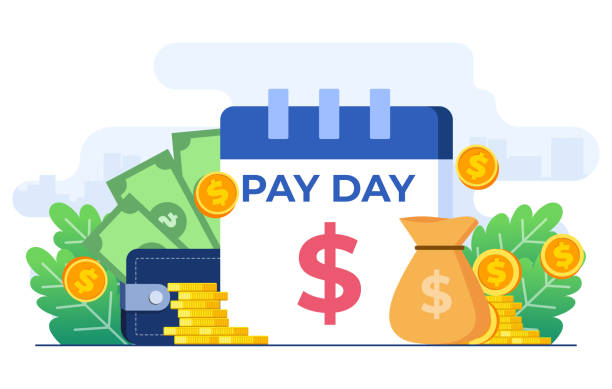For many people, a side hustle starts as a way to earn extra cash, explore a passion, or test out a business idea. But what happens when your “little project” starts showing real potential—and you start wondering if it could replace your 9-to-5?
Making that leap from part-time gig to full-time income is exciting, but it’s also risky. The difference between success and burnout often comes down to confidence, strategy, and support systems. That’s why platforms like Muse are so valuable—they help you sharpen your self-image, improve communication, and build the confidence you need to take bold steps. If you’re ready to take your side hustle seriously, Muse can give you the mindset and skills to grow without losing balance.
Contents
- 1 Why Side Hustles Are So Popular Today
- 2 Signs Your Side Hustle Could Go Full-Time
- 3 The Challenges of Going Full-Time
- 4 Step 1: Build a Financial Runway
- 5 Step 2: Test and Refine Your Offer
- 6 Step 3: Build Confidence in Selling
- 7 Step 4: Create Systems That Prevent Burnout
- 8 Step 5: Transition Gradually
- 9 Step 6: Upgrade Your Personal Brand
- 10 Step 7: Build a Support Network
- 11 Avoiding Burnout
- 12 The Muse Advantage
- 13 Final Thoughts
Why Side Hustles Are So Popular Today
- Flexibility: Unlike a job, a side hustle allows you to work on your own terms.
- Passion projects: Many side hustles are born from hobbies or creative outlets.
- Financial security: Extra income helps pay debts, build savings, or invest.
- Testing business ideas: A side hustle is often the safest way to experiment before going full-time.
But not every side hustle should—or can—become a career. That’s why clarity and preparation are essential.
Signs Your Side Hustle Could Go Full-Time
- Consistent income flow
If your side hustle generates stable revenue for at least 6–12 months, you may be ready to scale. - Market demand is growing
Look at your customer base. Is demand increasing? Do referrals and repeat sales happen naturally? - You’re hitting time limits
If you’re turning down opportunities because you can’t manage both your job and hustle, that’s a clear signal. - Passion outweighs exhaustion
Even with long hours, does your hustle energize you more than your main job drains you? That’s worth noting.
The Challenges of Going Full-Time
- Financial instability: A paycheck feels safe; running your own gig doesn’t always guarantee steady income.
- Work-life balance: Without boundaries, burnout comes quickly.
- Isolation: Leaving a traditional job can mean losing colleagues and structure.
- Confidence gaps: Many entrepreneurs fail because they don’t fully believe in their own value.
This last challenge is where coaching becomes critical. Confidence and self-image coaching from Muse helps you approach clients, pitch your services, and set higher rates without hesitation.
Step 1: Build a Financial Runway
Before quitting your job, create a buffer. Ideally, you’ll have 6–12 months of savings to cover expenses. This removes desperation from decision-making and gives your hustle room to grow organically.
Tips:
- Track current expenses honestly.
- Reduce unnecessary spending while transitioning.
- Consider reinvesting side hustle earnings into the business rather than using them for lifestyle upgrades.
Step 2: Test and Refine Your Offer
Your side hustle needs to solve a problem people will pay for. Ask yourself:
- What unique value do I bring?
- Who is my ideal client or customer?
- How can I package my skills/services to scale?
Muse’s Career Growth coaching is particularly useful here—helping you refine your communication and presentation so your offer feels professional, not amateur.
Step 3: Build Confidence in Selling
One of the hardest parts of turning a hustle into a business is asking for money confidently. Many people undercharge or hesitate to pitch.
To fix this:
- Research market rates and align your pricing.
- Develop a clear “value pitch” that explains not just what you do, but the results you deliver.
- Practice negotiation. Confidence is contagious—clients respond better when you sound sure.
Step 4: Create Systems That Prevent Burnout
Side hustles often feel chaotic because everything runs through one person—you. Before scaling up:
- Automate repetitive tasks (invoicing, scheduling, emails).
- Create templates for client communication.
- Use project management tools to stay organized.
- Outsource low-value tasks once you can afford it.
By reducing friction, you’ll free up energy for higher-value work like strategy, networking, and client relationships.
Step 5: Transition Gradually
Don’t quit your job overnight. Instead:
- Reduce hours at your main job if possible.
- Take on bigger hustle projects as your skills and confidence grow.
- Plan your exit date only when your side hustle income and systems feel reliable.
This gradual approach keeps stress levels lower and allows you to build momentum steadily.
Step 6: Upgrade Your Personal Brand
When you go full-time, your personal brand becomes your calling card. Clients and collaborators will judge you not only by your product or service, but by how you present yourself.
Focus on:
- Professional style: Dress and groom in a way that reflects seriousness.
- Online presence: Update your LinkedIn, website, and social profiles to highlight your hustle.
- Communication: Make emails, proposals, and calls clear and polished.
Muse’s Style & Wardrobe and Social Media Upgrade tracks are perfect here, ensuring your brand aligns with the bigger career you’re building.
Step 7: Build a Support Network
The entrepreneurial journey can feel isolating. Surround yourself with people who get it:
- Fellow entrepreneurs or freelancers.
- Mentors who’ve done it before.
- Coaches who can keep you accountable and provide outside perspective.
Platforms like Muse ensure you don’t make the journey alone. You’ll always have access to feedback, encouragement, and strategies from experts who understand confidence and growth.
Avoiding Burnout
The number one killer of side hustles going full-time? Burnout. Here’s how to protect yourself:
- Set boundaries: Define work hours and stick to them.
- Prioritize health: Sleep, exercise, and nutrition fuel energy and creativity.
- Take breaks: Hustle culture glorifies nonstop work, but recovery is essential.
- Celebrate milestones: Recognize progress to stay motivated.
The Muse Advantage
Scaling a side hustle into a full-time business requires more than strategy—it requires confidence, presence, and communication. That’s why Muse is such a powerful tool. Whether it’s learning how to pitch yourself, upgrading your style, or managing self-doubt, Muse provides the structure and guidance to help you thrive without burning out.
With Muse, you don’t just get generic advice—you get personalized coaching that aligns with your unique strengths, weaknesses, and goals. That level of support can be the difference between stumbling through the transition and making it smoothly.
Final Thoughts
Turning your side hustle into a full-time income stream is one of the most rewarding career moves you can make—but it’s also one of the riskiest. By planning your finances, refining your offer, building confidence, and creating systems, you set yourself up for success.
And with support from Muse, you don’t have to go it alone. From boosting your confidence to sharpening your personal brand, Muse gives you the tools to take your hustle to the next level—without sacrificing your sanity.
If your side hustle is calling for more attention, maybe it’s time to answer. With confidence, preparation, and the right support, you can make the leap—and thrive.




